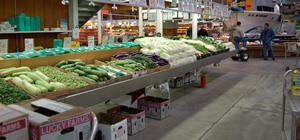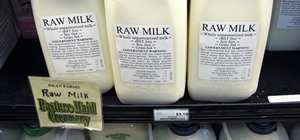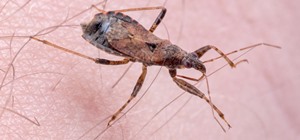Food is both a necessity and a joy. Many people enjoy exploring, cooking, eating, and learning about foods from around the world. But the picture isn't always rosy. A new report from the Centers for Disease Control and Prevention (CDC), highlights the ways and whereabouts of food that make us sick.
The CDC monitors, investigates, and reports on outbreaks of foodborne illness. Each year, about 48 million people become sick from eating food that has one or more of 250 known pathogens or toxins along for the ride. While almost 50 million sounds like a lot, the CDC believes most people don't report their illnesses caused by food because they do are not recognized as being part of a bigger, overall outbreak pattern.
What Is a 'Foodborne Disease Outbreak'?
When two or more people are sickened by a microorganism or toxin in one common food product, it is called an "outbreak." Outbreaks are a reportable condition, and the CDC receives and coordinates those reports. Already in 2017, there have been several serious foodborne outbreaks. Eight people, including a newborn, were infected with the bacteria Listeria monocytogenes by consuming contaminated soft cheese from a New York producer. All eight people went to the hospital, and two died.
Another 26 people became sick, and 12 people went to the hospital after consuming SoyNut Butter products contaminated with the bacteria Escherichia coli (E. coli). Because some people store and eat nut butters over longer periods of time, it is possible more victims will emerge as people who are unaware of the outbreak consume it and fall ill.
Facts About Food Poisoning in the US
In its 2015 report, the CDC includes the latest statistics available on where, how, and why people become ill from the food they eat in this country.
Keeping in mind that most people don't report food poisoning events, there were 902 confirmed foodborne disease outbreaks in 2015. These outbreaks resulted in 15,202 illnesses, and 950 hospitalizations. Of these, 15 people died, and 20 food product recalls.
Here are facts to help you understand the safety of your food supply:
- No state was immune from a foodborne outbreak. Of the 902 outbreaks, the states (in descending, top-ten order) with the most events include California (119), Ohio (86), Florida (73), Minnesota (68), Illinois (64), Washington (45), Kansas (42), Michigan (42), Colorado (38), Texas (34). A big shout out to Maine and Vermont, states with only one outbreak each.
- What is making us sick? Possible suspects include bacteria, viruses, chemicals in food, and parasites. Although bacteria were the overall winner in the "who caused the most outbreaks?" category, noroviruses were the most common cause of single-germ outbreaks. In the bacteria line-up, Salmonella outstripped competitors, followed by Shiga-toxin-producing Escherichia coli (E. coli) strains. That makes noroviruses, Salmonella, and E. coli the most likely single-germ candidates to spoil your picnic.
- Which pathogens put people in the hospital most often? During outbreaks, the germs most likely to cause illness severe enough for hospitalization include Salmonella, E. coli, and Shigella, a relative of E. coli that causes diarrhea, cramping, and fever.

- Pathogens cause illness — but which ones caused death? Salmonella caused nine deaths, types of Clostridium caused two deaths, and Listeria, Vibrio, and noroviruses cased one death each.
- Which foods make us sick? Often, the food that made people sick cannot be identified. For the cases that were identified (360 events), CDC investigators were able to categorize the cause. The most common categories of food that caused illness were (in descending order), fish, chicken, pork, and dairy. Of the 18 dairy-based outbreaks, 13 involved unpasteurized products. Specific foods that caused the most illness include seeded vegetables like tomatoes and cucumbers, pork, vegetable row crops— like leafy vegetables — and chicken.
- What pathogens were in which food? Salmonella was a culprit across-the-board in contaminated seeded vegetables, vegetable row crops, and pork. Salmonella in seeded vegetables killed six people, while other deaths were caused by pathogens in root crops (Clostridium), beef (Clostridium), sprouts (Salmonella), pork (Salmonella) and mollusks (Vibrio).
- Where are people most likely to pick up food poisoning? Of the outbreaks that occurred in a single location, foods prepared at restaurants were the likely cause of 60% of outbreaks. While you might think fast-food would be a good entry point for food poisoning, eat-in dining was the most common type of restaurant linked to outbreaks (followed by fast-food, and buffet-style dining). After restaurants, catered meals, private homes, and institutions were tops for problem food. Keep in mind, many people become ill from cooking conditions in their home, like cross-contamination of surfaces, or inadequately prepared or refrigerated food. These cases of food poisoning do not often make headlines but are a common cause of undocumented food illness.
A big take-away from this report is the frequency by which Salmonella causes serious illness and death. Stay safe by keeping this points in mind when you are out to eat, or cooking for yourself or others:
- Wash hands frequently, avoid cross-contamination in your kitchen.
- Cook ground beef, eggs, and poultry completely. At a restaurant, don't think twice about sending back undercooked food.
- Do not eat foods or drink beverages that include raw eggs or unpasteurized milk.
- Keep pets like reptiles and backyard birds away from food preparation areas, avoid contact between reptiles and the elderly, very young, or chronically ill.
Whether you frequently dine alone, or share food with friends and family, remember that foodborne illness is common. Keep a heads-up attitude for unsafe food preparation, and try to be sure your healthy food does not make you sick.
Just updated your iPhone? You'll find new emoji, enhanced security, podcast transcripts, Apple Cash virtual numbers, and other useful features. There are even new additions hidden within Safari. Find out what's new and changed on your iPhone with the iOS 17.4 update.



























Be the First to Comment
Share Your Thoughts